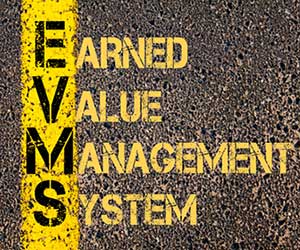
The true power of the earned value method lies in its ability to sound the alarm before a project veers off track. In my days at a large engineering firm, I watched countless project managers stumble into a rude awakening at the end of the monthly billing cycle, only then realizing their project was lagging. Too often, they’d brush it off, banking on a burst of efficiency in the next cycle—a hope that rarely materialized. This isn’t project management; it’s a passive, reactive gamble that almost guarantees delays and budget overruns.
Contrast that with project managers who master earned value management (EVM). Armed with this system, they gain the foresight to course-correct in real time, delivering projects on time and within budget. The result? Not just successful outcomes, but a turbocharged career and enhanced earning potential. In this article, I’ll break down how Actual Cost of Work Performed (ACWP) fits into the earned value method, wrapping up with a practical example to bring it all to life.
What is ACWP?
Actual Cost of Work Performed, usually abbreviated as ACWP, is one of the fundamental inputs of the Earned Value Management System. It is defined by the Project Management Institute as:
- The realized cost incurred for the work performed during a specific time period.
It is one of 3 pieces of data that the project manager collects before applying the earned value formulas to determine the project’s schedule and budget status. The other two are:
- Budgeted Cost of Work Scheduled (BCWS): The authorized, time-phased budget assigned to accomplish the scheduled work.
- Budgeted Cost of Work Performed (BCWP): The measure of work performed at a specific point in time, expressed in terms of the approved budget authorized for that work.
A fourth value, the Budget at Completion (BAC) completes the list of inputs but it does not require any extra work to collect. It is simply the project’s overall budget.
Background
ACWP is not rocket science. It is simply the cost of the work to date.
Most organizations have systems in place to track the project’s actual cost. The bigger issue is often how up-to-date the information is, and the project manager must make sure the project team has entered all their time and expenses before performing the earned value calculation.
ACWP must include all of the items of expense that were necessary to complete the project, such as:
- Labor
- Materials
- Equipment & Tools
- Intangibles
- Subcontractors
Sometimes there are items that include a grey area, such as when a member of the project team purchases tools that will be used by a department once the project is done. Does the department manager cover some of the cost? If so, how much? Unfortunately there is no magic formula for this. These types of questions simply need to be answered because the project has a fixed budget that has not been designed to absorb extra items.
In a normal application of the earned value method, the ACWP must be calculated on a task by task basis and summed to produce the project’s ACWP.
Many tasks are not completed in a linear fashion. For example, in the task called “Set Up Database” the task might require 1 person for the first half and 4 people for the last half. This results in the cost of the task being mostly incurred at the tail end, and skews the earned value results if you use a linear percent complete.
Most tasks should be small enough that this is not a major issue. But if you have a large expense all at once, like a subcontractor payment, you can adjust the Budgeted Cost of Work Planned (BCWP) by the same amount to avoid misleading negative cost or schedule variances.
Interpretation
Let’s take an example project task. The budget and schedule baseline, which are developed during the project planning phase, are:
| ID | Name | Budget | Start | End |
|---|---|---|---|---|
| 100 | Set up Database | $10,000 | Mar. 1 | Mar. 10 |
When the earned value analysis is performed, the project manager determines BCWP, BCWS, and ACWP for the task. Let’s say it’s March 5, the task is 40% complete, and the actual cost of the task is $3,000.
- BCWP is $5,000. The task should be half complete.
- BCWS is $4,000. The task is actually less than half complete.
- ACWP is $3,000. The task has spent less than it has been scheduled to at this point.
The basic earned value formulas fall into two categories – Cost and Schedule. The Cost status of the project is:
- Cost Variance: CV = BCWS – ACWP = $1,000. Because this is positive, the project is under budget.
- Cost Performance Index: CPI = BCWS / ACWP = 1.33. This means the project has spent 33% less than it should have at this point in time.
The schedule status is:
- Schedule Variance: SV = BCWS – BCWP = -$1,000. Because this is negative, the project is behind schedule.
- Schedule Performance Index: SPI = BCWS / BCWP = 0.80. This means the project is performed 80% of the work it should have at this point in time.
Related Earned Value Metrics
The other inputs to the earned value method are as follows:
- Budgeted Cost of Work Scheduled (BCWS): Also known as Planned Value (PV), this is the amount that the task should have been completed at the point of analysis (usually today).
BCWS = % Complete (Planned) x Task Budget
For example, if the task budget is $10,000, the task dates are from March 1 to March 10 and it’s March 5 today, BCWS = 50% x $10,000 = $5,000.
- Budgeted Cost of Work Performed (BCWP): Also known as Earned Value (EV), this is the amount of the task that is actually completed. It is calculated from the project budget.
BCWP = % Complete (Actual) x Task Budget
For example, if the actual percent complete is 75% and the task budget is $10,000, BCWP = 75% x $10,000 = $7,500.
Earned Value Example
This example will walk you through a basic earned value calculation for a hypothetical project with two tasks.
Before we start, the baseline developed during project planning is:
| ID | Task | Start date | End Date | Budget |
|---|---|---|---|---|
| 100 | Set up Database | Mar. 1 | Mar. 10 | $10,000 |
| 200 | Enter Data | Mar. 5 | Mar. 15 | $30,000 |
| TOTAL | $40,000 | |||
Let’s say it’s Mar. 11. Determine the BCWS, BCWP, and ACWP for the Project.
Step 1: Determine Budgeted Cost of Work Schedule (BCWS)
- Task 100 should be complete. BCWS = $10,000.
- Task 200 should be 60% complete, because it’s Mar. 11 and the task goes from Mar. 5 to Mar. 15. Therefore, BCWS = 60% x $30,000 = $18,000.
We will add a column called ‘BCWS’ to the table.
| ID | Task | Start date | End Date | Budget | BCWS |
|---|---|---|---|---|---|
| 100 | Set up Database | Mar. 1 | Mar. 10 | $10,000 | $10,000 |
| 200 | Enter Data | Mar. 5 | Mar. 20 | $30,000 | $18,000 |
| TOTAL | $40,000 | $28,000 | |||
Step 2: Determine Budgeted Cost of Work Performed (BCWP)
Please note, the determination of BCWS, above, is derived from the Percent Complete (Planned), which is different than Percent Complete (Actual). Since this is not a real project we will have to make an assumption for Percent Complete (Actual). Let’s say the tasks are 75% and 50% complete, respectively.
- Task 100 is 75% complete, therefore BCWP = 75% x $10,000 = $7,500.
- Task 200 is 50% complete, therefore BCWP = 50% x $30,000 = $15,000.
Next we will add a column called BCWP.
| ID | Task | Start date | End Date | Budget | BCWS | BCWP |
|---|---|---|---|---|---|---|
| 100 | Set up Database | Mar. 1 | Mar. 10 | $10,000 | $10,000 | $7,500 |
| 200 | Enter Data | Mar. 5 | Mar. 20 | $30,000 | $18,000 | $15,000 |
| TOTAL | $40,000 | $28,000 | $22,500 | |||
Step 3: Determine Actual Cost of Work Performed (ACWP)
Since this is a fictional project we will have to make another assumption.
- Task 100’s actual cost is $12,000.
- Task 200’s actual cost is $13,000.
Next we will add a column called ACWP.
| ID | Task | Start date | End Date | Budget | BCWS | BCWP | ACWP |
|---|---|---|---|---|---|---|---|
| 100 | Set up Database | Mar. 1 | Mar. 10 | $10,000 | $10,000 | $7,500 | $12,000 |
| 200 | Enter Data | Mar. 5 | Mar. 20 | $30,000 | $18,000 | $15,000 | $13,000 |
| TOTAL | $40,000 | $28,000 | $22,500 | $25,000 | |||
Step 4: Determine Schedule Variance (SV) and Schedule Performance Index (SPI)
SV = EV – PV.
SPI = EV / PV.
| ID | Task | Start date | End Date | Budget | BCWS | BCWP | ACWP | SV | SPI |
|---|---|---|---|---|---|---|---|---|---|
| 100 | Set up Database | Mar. 1 | Mar. 10 | $10,000 | $10,000 | $7,500 | $12,000 | -$2,500 | 0.75 |
| 200 | Enter Data | Mar. 5 | Mar. 20 | $30,000 | $18,000 | $15,000 | $13,000 | -$3,000 | 0.83 |
| TOTAL | $40,000 | $28,000 | $22,500 | $25,000 | -$5,500 | 0.81 | |||
The project is behind schedule because SV is negative. Both tasks are behind schedule because their SV’s are negative. The project is behind schedule by $5,500 (out of the total project $40,000) which seems significant, and the SPI of 0.81 says that the project should have accomplished 19% more than it actually has at this point. Clearly this project manager has work to do if this project is to finish on time.
Step 5: Determine Cost Variance (CV) and Cost Performance Index (CPI)
CV = EV – AC.
CPI = EV / AC.
| ID | Task | Start date | End Date | Budget | BCWS | BCWP | ACWP | CV | CPI |
|---|---|---|---|---|---|---|---|---|---|
| 100 | Set up Database | Mar. 1 | Mar. 10 | $10,000 | $10,000 | $7,500 | $12,000 | -$4,500 | 0.63 |
| 200 | Enter Data | Mar. 5 | Mar. 20 | $30,000 | $18,000 | $15,000 | $13,000 | $2,000 | 1.15 |
| TOTAL | $40,000 | $28,000 | $22,500 | $25,000 | -$2,500 | 0.90 | |||
On the cost side, one task is over budget and one is under budget. But the total CV is negative therefore the project is over budget. The CPI of 0.90 means the project has spent 10% more than it should have at this point.
Although the project has both cost and schedule problems, the cost problems are not nearly as significant.










Leave a Reply